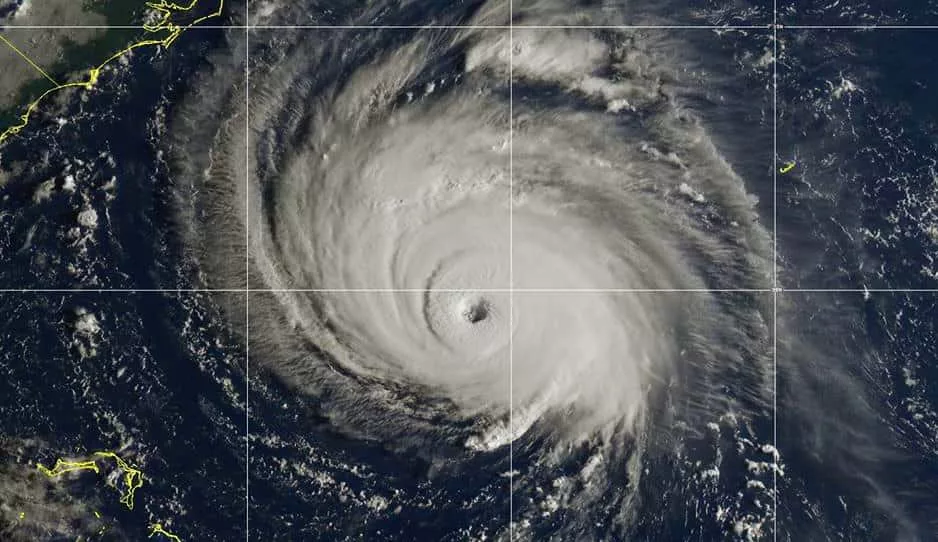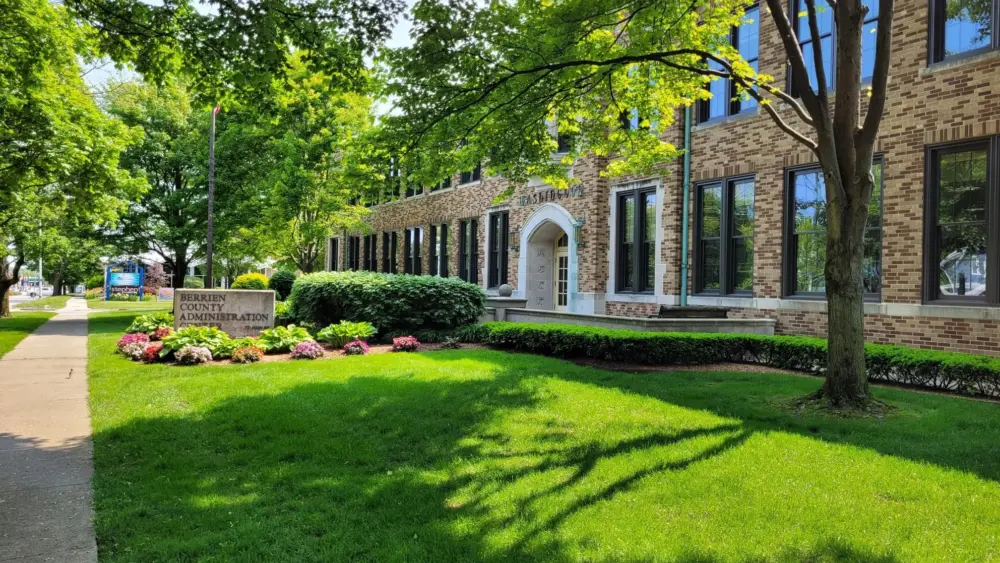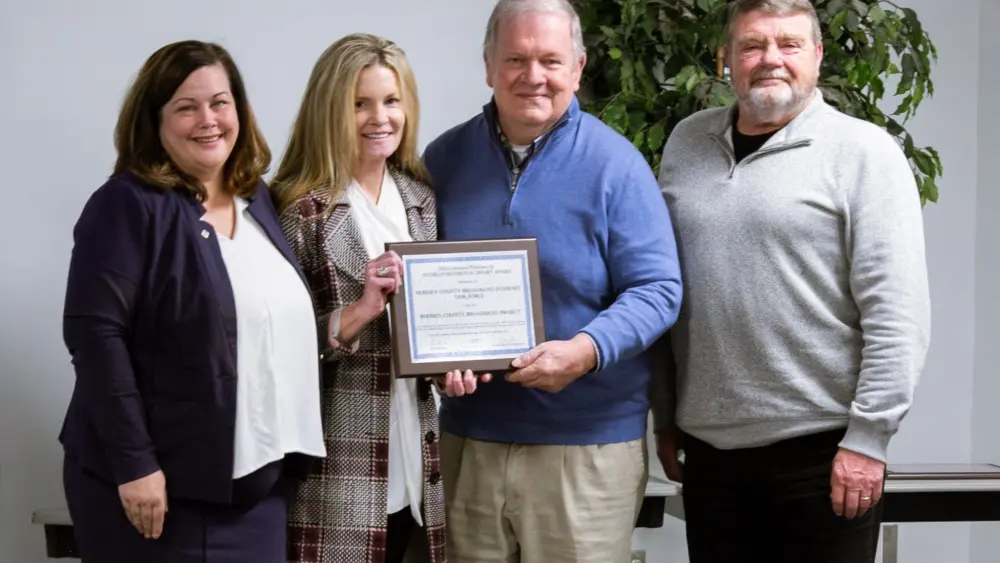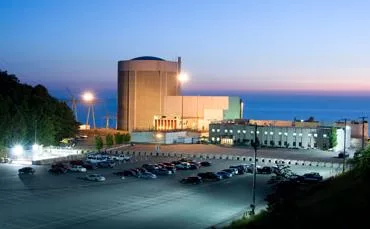As the Eastern Seaboard braces for the powerhouse impact of Hurricane Florence and people are evacuated at a steady pace, there are a number of Michigan people ready to step in and help battle the aftermath including some from right here in Michigan’s Great Southwest.
By way of example, Indiana Michigan Power has crews on standby to offer assistance after Hurricane Florence makes landfall.
The utility has communicated with energy providers on the East Coast, and I&M is prepared to send about 200 contractors and employees to participate in the restoration after the storm. Those crews would come from across I&M’s service territory both in Indiana and Michigan.
The exact number of crews – along with the trucks, equipment and tools they will need – as well as the locations where they will work will be decided as the power companies affected by the hurricane determine their needs.
I&M spokesman Tracy Warner says, “Experienced energy professionals have a long history of working safely to restore communities during these conditions while providing mutual assistance to areas affected by damaging storms. Last year, I&M crews assisted with Hurricane Harvey and Hurricane Irma restorations efforts, working through flooding, wind damage and debris similar to what is expected with this storm. Our employees are well-trained and ready to go when the call comes in.”
Also standing by in the Great Lakes State and/or on the way east are teams from Consumers Energy. Company officials say their teams stand ready to assist local energy providers as Hurricane Florence is expected to make landfall on the North Carolina shoreline as a Category 4 storm by Friday morning.
The utilities potentially affected by the storm are part of the Southeastern Electric Exchange, a collection of more than a dozen utilities. The exchange’s first wave of mutual assistance requests has been filled, with crews now headed to the region to pre-stage workers and equipment before the significant hurricane strikes. Consumers Energy is linked to developments on the hurricane response via the Great Lakes Mutual Assistance Group and the National Response Executive Committee.
Consumers Energy expects a second request to send crews after landfall and it is highly likely it will release contractors from its system here in Michigan to head to the southeast, as well as company crews and equipment. The exact size of contingent and when they will leave Michigan will be determined by this weekend. The host utility pays for all of Consumers Energy’s costs to restore power in these situations.
In determining to send crews out of state, Consumers Energy balances its current workload and customer needs with the importance of utility mutual aid agreements across the U.S. As part of the Great Lakes Mutual Assistance Group, in late August, Consumers Energy received restoration help from more than 300 electric workers in Illinois, Indiana, Tennessee, Kentucky and other parts of Michigan after a series of storms over a week’s time knocked out power to more than 270,000 customers.
In addition to utility crews from Michigan, Gov. Rick Snyder announced earlier in the week that the state is deploying a Michigan State Police staff member to the Federal Emergency Management Agency (FEMA) Region III regional response coordination center in Philadelphia to provide support as an Emergency Management Assistance Compact (EMAC) liaison between state and federal agencies. The deployment is occurring as a result of a request made for out-of-state support through the National Emergency Management Agency.
Snyder says, “Our thoughts are with those bracing for Hurricane Florence’s landfall on the east coast,” and he adds, “We’re pleased to respond to the call and provide emergency assistance to our eastern neighbors as they prepare for this intensifying storm.”
As an EMAC liaison, the MSP personnel will gather and share resource request information with EMAC participating states and federal partners such as the FEMA, U.S. Department of Transportation, U.S. Department of Homeland Security, Office of Emergency Communications and the U.S. Department of Health and Human Services.
State Police Director Kriste Kibbey Etue, who also serves as Michigan’s Director of Emergency Management and Homeland Security says, “As the EMAC national coordinating state, our role is to closely track all resource requests coming from the east coast and work with our partnering states to fill any needs.” Col. Etue adds, “Our staff is well trained and ready to help wherever there is a need.”
The EMAC is an all hazards/all disciplines mutual aid compact between the states to provide consistent and coordinated response to emergencies and disasters across the nation. All costs associated with deploying resources under EMAC are paid for by the requesting state.
Michigan has served as the EMAC national coordinating state since last March. In that role, the state is responsible for coordinating the deployment of resources such as personnel and equipment to member states for all emergencies or disasters in the nation.
Since joining EMAC in 2002, Michigan has sent resources out-of-state several times, including response efforts for Hurricane Katrina in Louisiana in 2005, severe flooding in Minnesota in 2009, Hurricane Irene in New York in 2011, Hurricane Sandy in New Jersey in 2012, Hurricane Irma in Florida in 2017 and Hurricane Maria in Puerto Rico in 2017.
Inevitably, there will also be Red Cross Response workers and other emergency responders from Michigan helping with rescue, recovery and renovation efforts in the wake of Florence. Stay tuned, and stay informed as the storm surge continues.
The photo accompanying this story on Moody on the Market is courtesy of the National Oceanic and Atmospheric Association and the National Weather Service.






